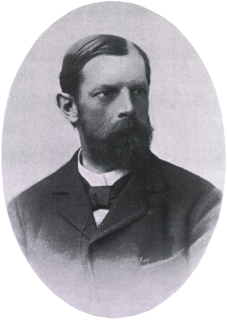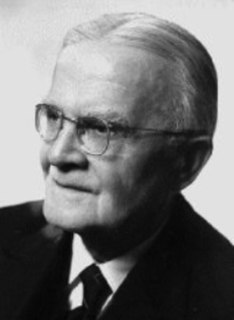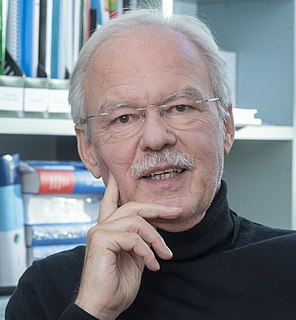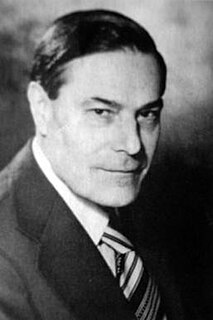
Heinrich Hermann Robert Koch was a Jewish born German physician and microbiologist. As one of the main founders of modern bacteriology, he identified the specific causative agents of tuberculosis, cholera, and anthrax and also gave experimental support for the concept of infectious disease, which included experiments on humans and animals. Koch created and improved laboratory technologies and techniques in the field of microbiology, and made key discoveries in public health. His research led to the creation of Koch's postulates, a series of four generalized principles linking specific microorganisms to specific diseases that proved influential on subsequent epidemiological principles such as the Bradford Hill criteria. For his research on tuberculosis, Koch received the Nobel Prize in Physiology or Medicine in 1905. The Robert Koch Institute is named in his honour.

Paul Ehrlich was a Nobel prize-winning German Jewish physician and scientist who worked in the fields of hematology, immunology, and antimicrobial chemotherapy. He is credited with finding a cure for syphilis in 1909. He invented the precursor technique to Gram staining bacteria. The methods he developed for staining tissue made it possible to distinguish between different types of blood cells, which led to the capability to diagnose numerous blood diseases.

Emil von Behring, born Emil Adolf Behring, was a German physiologist who received the 1901 Nobel Prize in Physiology or Medicine, the first one awarded in that field, for his discovery of a diphtheria antitoxin. He was widely known as a "saviour of children," as diphtheria used to be a major cause of child death. He was honored with Prussian nobility in 1901, henceforth being known by the surname "von Behring."
The Gottfried Wilhelm Leibniz Prize is a program of the Deutsche Forschungsgemeinschaft which awards prizes “to exceptional scientists and academics for their outstanding achievements in the field of research.” It was established in 1985 and up to ten prizes are awarded annually to individuals or research groups working at a research institution in Germany or at a German research institution abroad.

Fritz Richard Schaudinn was a German zoologist.

Max von Gruber was an Austrian scientist. As a bacteriologist he discovered specific agglutination in 1896 with his English colleague Herbert Durham (Gruber-Widal-reaction). But his main interests were studying hygiene and sexual life.
Stefan Ślopek (December 1, 1914 in Skawa near Kraków – 22 August 1995, Wrocław was a Polish scientist specializing in clinical microbiology and immunology.

Hans Ernst August Buchner was a German bacteriologist who was born and raised in Munich. He was the older brother of Eduard Buchner (1860–1917), winner of the 1907 Nobel Prize in Chemistry.

Carl Georg Friedrich Wilhelm Flügge was a German bacteriologist and hygienist. His finding that pathogens were present in expiratory droplets large enough to settle around an individual, the eponymous Flügge droplets, laid ground for the concept of droplet transmission as a route for the spread of respiratory infectious diseases.
Hermann Wagner is a German scientist in the field of microbiology and immunology and past Dean of the Medical Faculty of the Technical University Munich (TUM). His massive number of published works, at over 370, makes him one of Europe's most cited immunologists.

Ernst Friedberger was a German immunologist and hygienist born in Giessen. He was of Jewish ancestry.

Paul Theodor Uhlenhuth was a German bacteriologist and immunologist, and Professor at the University of Strasbourg (1911–1918), at the University of Marburg (1918–1923) and at the University of Freiburg (1923–1936). He was rector of the University of Freiburg 1928–1929. After his retirement in 1936, he led his own research institute in Freiburg, known as the State Research Laboratory, until his death in 1957.
The Paul Ehrlich and Ludwig Darmstaedter Prize is an annual award bestowed by the Paul Ehrlich Foundation since 1952 for investigations in medicine. It carries a prize money of 100,000 Euro. The prize awarding ceremony is traditionally held on March 14, the birthday of Nobel laureate Paul Ehrlich, in the St. Paul's Church, Frankfurt am Main.

Fred (Friedrich) Neufeld was a physician and bacteriologist who discovered the pneumococcal types. This discovery led Fred Griffith to show that one pneumococcal type could be transformed into another. Subsequently, Oswald Avery demonstrated that the transforming substance was DNA. All modern molecular biology has evolved from this work.

Stefan Hugo Ernst Kaufmann is a German immunologist and microbiologist and is one of the highly cited immunologists worldwide for the decade 1990 to 2000.. He is amongst the 0.01% most cited scientists of ca. 7 million scientists in 22 major scientific fields globally.
The Paul Ehrlich Institute is a German research institution and medical regulatory body, and is the German federal institute for vaccines and biomedicines. It is a federal agency and subordinate to the Federal Ministry of Health. It is a WHO Collaborating Centre for quality assurance of blood products and in vitro diagnostic devices. The institute is located in Langen, Hesse, near Frankfurt, and was located in Frankfurt for most of the 20th century. It is named for its founding director, the immunologist and Nobel Prize laureate Paul Ehrlich.
Wilhelm Kolle was a German bacteriologist and hygienist. He served as the second director of the Royal Institute for Experimental Therapy, succeeding its founder, the Nobel laureate Paul Ehrlich. He was also the original author, with Heinrich Hetsch, of the famous book Experimental Bacteriology, one of the most authoritative works in microbiology in the first half of the 20th century.
Experimental Bacteriology: in Its Applications to the Diagnosis, Epidemiology, and Immunology of Infectious Diseases is a textbook on bacteriology and infectious diseases. It was one of the most authoritative works in medical microbiology in the first half of the 20th century.
The magic bullet is a scientific concept developed by a German Nobel laureate Paul Ehrlich in 1900. While working at the Institute of Experimental Therapy, Ehrlich formed an idea that it could be possible to kill specific microbes, which cause diseases in the body, without harming the body itself. He named the hypothetical agent as Zauberkugel, the magic bullet. He envisioned that just like a bullet fired from a gun to hit a specific target, there could be a way to specifically target invading microbes. His continued research to discover the magic bullet resulted in further knowledge of the functions of the body's immune system, and in the development of Salvarsan, the first effective drug for syphilis, in 1909. His works were the foundation of immunology, and for his contributions he shared the 1908 Nobel Prize in Physiology or Medicine with Élie Metchnikoff.

Henning Brandis was a German physician and microbiologist. He was Professor of Medical Microbiology and Immunology and Director of the Institute for Medical Microbiology and Immunology at the University of Bonn from 1967 until his 1984 retirement. He was editor-in-chief of the journal Zeitschrift für Immunitätsforschung. He was a member of the Academy of Sciences Leopoldina and received the Officer's Cross of the Order of Merit of the Federal Republic of Germany in 1976 for services to medical microbiology.












